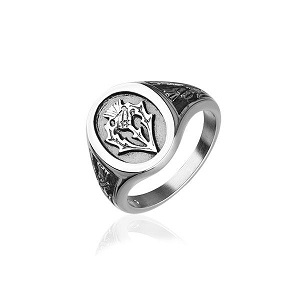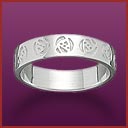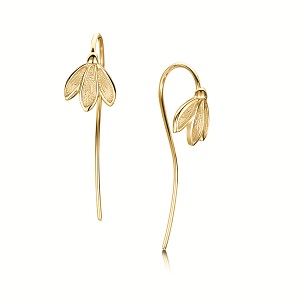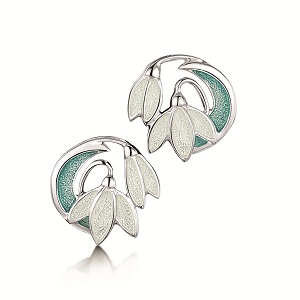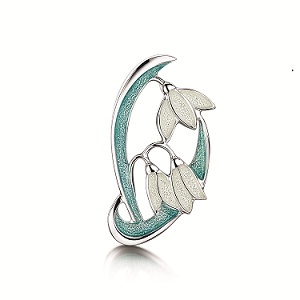Jewelery Care
General Care
With proper care, precious jewellery should last for decades and bring you years of pleasure. These tips are designed to show you how you will get lasting pleasure from your purchases and bequeaths. By taking a few extra minutes of care or adapting practical advice you can safe guard them for longer.
1 ~ Beauty products can affect jewellery. That little spray of perfume or hairspray can discolour gold or make pearls turn yellow. Put jewellery on after you have used your cosmetics and sprays.
2 ~ Take off your jewellery especially rings when doing household chores or gardening. They could become damaged by knocking out stones or coming into contact with abrasive materials, which discolour metal.
3 ~ Settings can get clogged up with soap and hand cream. Take them off before washing hands and using cream.
4 ~ Heat and hot water can loosen settings where an adhesive has been used. Pearl rings, earrings and pendants have this type of setting be careful with them.
5 ~ Don't wear too many chains at any one time, they will tangle and rub off one another causing damage.
6 ~ Strong smelling foods e.g. fish & onions can tarnish gold and silver.
7 ~ Wear jewellery as much as possible as this keeps the metals bright.
8 ~ Clean your jewellery periodically. An old soft toothbrush is ideal to get into any difficult nooks and crannies with warm soapy water or purchase jewellery cleaning fluid from your jeweller. See heading under Cleaning for detailed information.
1 ~ Beauty products can affect jewellery. That little spray of perfume or hairspray can discolour gold or make pearls turn yellow. Put jewellery on after you have used your cosmetics and sprays.
2 ~ Take off your jewellery especially rings when doing household chores or gardening. They could become damaged by knocking out stones or coming into contact with abrasive materials, which discolour metal.
3 ~ Settings can get clogged up with soap and hand cream. Take them off before washing hands and using cream.
4 ~ Heat and hot water can loosen settings where an adhesive has been used. Pearl rings, earrings and pendants have this type of setting be careful with them.
5 ~ Don't wear too many chains at any one time, they will tangle and rub off one another causing damage.
6 ~ Strong smelling foods e.g. fish & onions can tarnish gold and silver.
7 ~ Wear jewellery as much as possible as this keeps the metals bright.
8 ~ Clean your jewellery periodically. An old soft toothbrush is ideal to get into any difficult nooks and crannies with warm soapy water or purchase jewellery cleaning fluid from your jeweller. See heading under Cleaning for detailed information.
Gold
Gold is a natural forming metal and was formed by heat and high pressure deep in the earth's crust. Gold was first found in the Asian and African continents, layers of it easy to reach near the earth's surface. The mining for gold only started 2,000 years ago by the Egyptians and the Romans who also developed gold fever, using it for coins and jewellery ornamentation. Gold is precious and only found in small quantities. Up to 3 tonnes of rock is required to be removed and treated just to obtain one ounce. It is very malleable and ductile and is perfect to shape into jewellery.
The Romans called gold Aurum and coins as old as 560 BC have been found made in gold. In the middle 1800's gold was discovered in America in the county of California. Prospectors came to pan for gold. They thought they would become rich very easily and panned in streams for gold nuggets and also blasted mountain ranges in their search. Many died starving and disillusioned; only a handful made money in this way and staked a claim for the land. Gold was associated with the well to do aristocracy. The best known kings from history are associated with gold. There was King Midas; the Midas touch - everything he touched turned to gold, a saying we still use today. The Incas' worshipped a sun god and associated gold with their god. They regularly sacrificed humans to their god and also had a religious lake on which the high priest would row out and throw priceless artefacts, gold and jewel encrusted objects in to the deep water. Archaeologists have only found a small portion of these and still believe numerous others lie beneath the murky depths. The boy king Tutankhamun was surrounded by every day gold items. Life size servant statues, chariots, horses, bowls and plates which he needed to use in the afterlife and were buried for this purpose. You can see his belongings in the Cairo Museum, well worth a visit, and be astounded by the size and the amount of gold used. His coffin was all gold and then he had 3 large gold cubes, the next bigger than the other, breathtaking! Forward from the past in to the future. Did you know that gold is a good conductor of electricity and heat? Very Small quantities are found in telephones and microwaves etc. The jet you travel on going on holiday has gold tinted windows in the cockpit to stop the pilot from being dazzled and those astronauts high above the earth look out in gold tinted visors.
Gold is measured in carats (ct) not carrots - rabbits eat those. Pure gold is 24 carats, which is 99.9% pure. It doesn't loose its lustre and won't corrode. The word carat comes from Arabia and means bean seed; these seeds were used as weights to measure stones (the precious variety) and gold. 24 carat is too soft so a harder metal is added. This is called the gold alloy. When people talk about 9 carat and 18 carat gold they mean 9 parts out of 24 is gold and 18 parts out of 24 is gold. Around the world you will also get 8 CT from Germany, and 10ct from USA. The highest purity used however is 22ct.
How do you know what carat of gold you are getting? In Britain gold is stamped or hallmarked. There are 4 parts to a hallmark. Firstly the sponsors stamp (the maker) then the quality mark, this tells you how many parts pure or the carat. 9ct has 375 on it. 18ct has 750 on it. Next the assay office mark - where it was tested. An anchor means Birmingham, a leopard face means London, Edinburgh is a castle and Sheffield a rose (looks like the York rose). The date letter comes next. This shows you the year it was manufactured. As there are only 26 letters in the alphabet and a different one is used each year, the style of letter also comes in to account, i.e. is it a capital? Is it fancy swirly? You can buy a book of hallmarks and check it with that. The only exception to this rule is if the item weighs under a gram. Then it is exempt.
Gold can come in jewellery in many shades depending on the alloy used to mix it. The most commonly manufactured are rose gold (Victorian gold) white gold and natural yellow gold. The alloys commonly used to change the colour are silver, copper and zinc. As gold is an everlasting token, wedding rings are popular in gold with or without engraving, patterned or with stones. If you can afford 18 carat, even better because you are getting double the gold. Gold can become dull if not worn often and benefits from being cleaned regularly. Keep gold away from bleaches and chlorine and if you take medication you may find gold discolouration due to acid in your skin.
I'm going to tell you an interesting little story about wedding rings. In medieval times when a man was marrying his betrothed and putting the ring on her finger, it was said that if the ring stopped at her first knuckle, the woman would be the one to wear the trousers so to speak but if the wedding ring slipped over, the husband would have no trouble, his wife would be meek and mild. What did bright brides do? Yes they bent their finger a little so it wouldn't go on. Gold is such a beautiful metal and there is so much choice in jewellery today. Visit our on line store and chose from our wide selection of gold Celtic and Mackintosh Jewellery in rings, pendants, bracelets, bangles, earrings, cuff links and brooches. HAPPY HUNTING.
The Romans called gold Aurum and coins as old as 560 BC have been found made in gold. In the middle 1800's gold was discovered in America in the county of California. Prospectors came to pan for gold. They thought they would become rich very easily and panned in streams for gold nuggets and also blasted mountain ranges in their search. Many died starving and disillusioned; only a handful made money in this way and staked a claim for the land. Gold was associated with the well to do aristocracy. The best known kings from history are associated with gold. There was King Midas; the Midas touch - everything he touched turned to gold, a saying we still use today. The Incas' worshipped a sun god and associated gold with their god. They regularly sacrificed humans to their god and also had a religious lake on which the high priest would row out and throw priceless artefacts, gold and jewel encrusted objects in to the deep water. Archaeologists have only found a small portion of these and still believe numerous others lie beneath the murky depths. The boy king Tutankhamun was surrounded by every day gold items. Life size servant statues, chariots, horses, bowls and plates which he needed to use in the afterlife and were buried for this purpose. You can see his belongings in the Cairo Museum, well worth a visit, and be astounded by the size and the amount of gold used. His coffin was all gold and then he had 3 large gold cubes, the next bigger than the other, breathtaking! Forward from the past in to the future. Did you know that gold is a good conductor of electricity and heat? Very Small quantities are found in telephones and microwaves etc. The jet you travel on going on holiday has gold tinted windows in the cockpit to stop the pilot from being dazzled and those astronauts high above the earth look out in gold tinted visors.
Gold is measured in carats (ct) not carrots - rabbits eat those. Pure gold is 24 carats, which is 99.9% pure. It doesn't loose its lustre and won't corrode. The word carat comes from Arabia and means bean seed; these seeds were used as weights to measure stones (the precious variety) and gold. 24 carat is too soft so a harder metal is added. This is called the gold alloy. When people talk about 9 carat and 18 carat gold they mean 9 parts out of 24 is gold and 18 parts out of 24 is gold. Around the world you will also get 8 CT from Germany, and 10ct from USA. The highest purity used however is 22ct.
How do you know what carat of gold you are getting? In Britain gold is stamped or hallmarked. There are 4 parts to a hallmark. Firstly the sponsors stamp (the maker) then the quality mark, this tells you how many parts pure or the carat. 9ct has 375 on it. 18ct has 750 on it. Next the assay office mark - where it was tested. An anchor means Birmingham, a leopard face means London, Edinburgh is a castle and Sheffield a rose (looks like the York rose). The date letter comes next. This shows you the year it was manufactured. As there are only 26 letters in the alphabet and a different one is used each year, the style of letter also comes in to account, i.e. is it a capital? Is it fancy swirly? You can buy a book of hallmarks and check it with that. The only exception to this rule is if the item weighs under a gram. Then it is exempt.
Gold can come in jewellery in many shades depending on the alloy used to mix it. The most commonly manufactured are rose gold (Victorian gold) white gold and natural yellow gold. The alloys commonly used to change the colour are silver, copper and zinc. As gold is an everlasting token, wedding rings are popular in gold with or without engraving, patterned or with stones. If you can afford 18 carat, even better because you are getting double the gold. Gold can become dull if not worn often and benefits from being cleaned regularly. Keep gold away from bleaches and chlorine and if you take medication you may find gold discolouration due to acid in your skin.
I'm going to tell you an interesting little story about wedding rings. In medieval times when a man was marrying his betrothed and putting the ring on her finger, it was said that if the ring stopped at her first knuckle, the woman would be the one to wear the trousers so to speak but if the wedding ring slipped over, the husband would have no trouble, his wife would be meek and mild. What did bright brides do? Yes they bent their finger a little so it wouldn't go on. Gold is such a beautiful metal and there is so much choice in jewellery today. Visit our on line store and chose from our wide selection of gold Celtic and Mackintosh Jewellery in rings, pendants, bracelets, bangles, earrings, cuff links and brooches. HAPPY HUNTING.
Platinum
Platinum is an extremely hard wearing metal much harder than gold and is used for the claws to hold in stones on rings. It has a much higher melting point than gold so not all goldsmiths work with it. Platinum and white gold look better when rhodium plated which makes the silver colour stay longer. After the plating wears off, metal may look slightly black but this can be remedied with re-plating it.
Silver
Silver in Britain, known as sterling silver, is one of the purest in the world with 925 parts pure out of 1000. Like gold, silver for jewellery is mixed with alloy. To clean silver use a specialised solution available from jewellery outlets. Silver quickly goes black when affected by oxygen and light. Clean regularly to keep it sparkling.
Diamonds
Most engagement rings now a days incorporate diamonds into them. Diamond is one of the hardest materials known to man. It is also a good reflector and lets light pass through and separates out, in an arc of colour, demonstrating a brilliant sparkle. A diamond is valued using the 4 C's. These are Cut, Colour, Clarity and Carat weight.
Cut ~ Brilliant cut diamonds have 58 facets. These are the flat surfaces and brilliant diamonds are said to reflect the best spectrum of light. Other cuts include Old Fashioned Eight Cut, which are still seen in older jewellery today, Cabochon, a domed shape used for opals because they flake easily, and Emerald cut which shows off coloured stones and are traditionally used for emeralds hence the name. The emerald cut takes on a square or oblong shape although there are also funny shapes; princess, trillion, pear and marquise.
Colour ~The more colourless the diamond the more expensive it is. Diamonds come in various colours including black, pink, yellow, sherry colour and of course clear.
Clarity ~ This means that when you look into the stone you may see small black bits or what looks like small cracked bits and bubbles. These are called inclusions and every stone is unique in their size and positioning. The more inclusions the stone has the less expensive it is. The clearer the stone the more expensive it is.
Carat Weight ~ Basically the bigger the stone is, the more expensive it will be. Although a cluster setting may look bigger but if it's carat weight is the same as a solitaire, the solitaire will be more expensive as a rule.
Cut ~ Brilliant cut diamonds have 58 facets. These are the flat surfaces and brilliant diamonds are said to reflect the best spectrum of light. Other cuts include Old Fashioned Eight Cut, which are still seen in older jewellery today, Cabochon, a domed shape used for opals because they flake easily, and Emerald cut which shows off coloured stones and are traditionally used for emeralds hence the name. The emerald cut takes on a square or oblong shape although there are also funny shapes; princess, trillion, pear and marquise.
Colour ~The more colourless the diamond the more expensive it is. Diamonds come in various colours including black, pink, yellow, sherry colour and of course clear.
Clarity ~ This means that when you look into the stone you may see small black bits or what looks like small cracked bits and bubbles. These are called inclusions and every stone is unique in their size and positioning. The more inclusions the stone has the less expensive it is. The clearer the stone the more expensive it is.
Carat Weight ~ Basically the bigger the stone is, the more expensive it will be. Although a cluster setting may look bigger but if it's carat weight is the same as a solitaire, the solitaire will be more expensive as a rule.
Pearls
here can be different types of pearls; those which are Man Made with glass beads & fish scales,and Freshwater or Baroque pearls which are naturally made in freshwater oysters but are miss-shaped. Cultured pearls are culled, grown in proper conditions by the farmer putting in an irritant usually a small bead and the nacre (pearl deposits) grows round it. No pearls should be dipped or the skin will flake off them. Rub them with a soft cloth instead.
Storage
To minimise jewellery rubbing together use a jewellery box with different compartments, which are well padded or better still, keep them in their individual boxes. Diamonds scratch other jewellery, keep them wrapped up or separate them. Chains constantly knot together but don't tug them. The best way to detangle them is to use a pin and be gentle when separating them.
Cleaning
Regularly clean your jewellery to keep it in tiptop condition, at least once a month. Brown tinting can come off on clothes and skin and is difficult to get off. When cleaning jewellery use the proper manufactured solution which can be brought from most jewellery outlets or dip them in a bowl with warm soapy water giving them a gentle stir and finishing off with an old soft toothbrush. Dry them with a soft cloth. Do not poke about under stones as this can dislodge them from settings. Hard stones (diamond, garnets, sapphires, rubies & amethysts) can be dipped and scrubbed with a toothbrush. Amber can be cleaned as long as it is dried straight away. Pearls, jade, jet, lapis, emeralds, opals & turquoise soak up liquid so they should not be dipped. Emeralds, coral & jade can be oiled treated and dipping strips the stone of oils. These stones are classed as porous.





